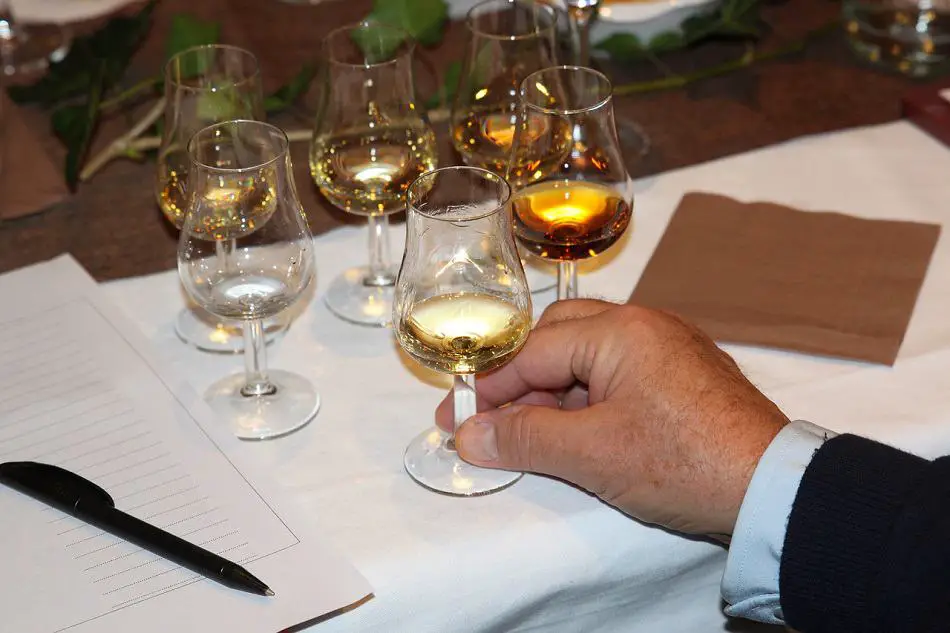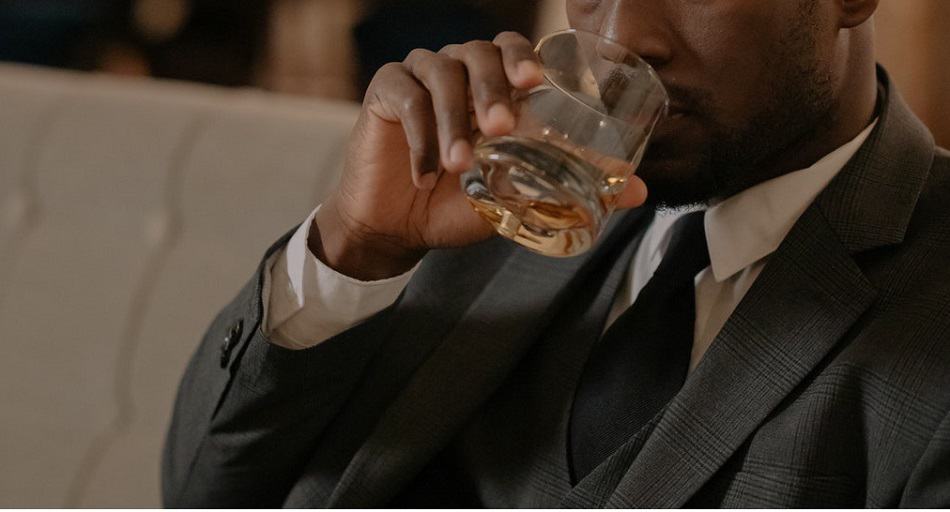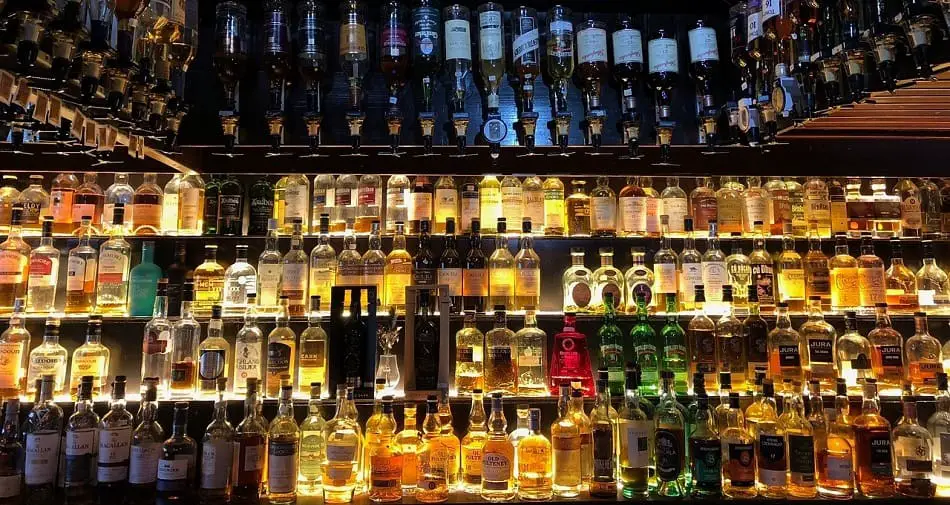It’s a bizarre thing, but there are many people who despite being put off by this particular drink, instead of accepting it as they do with other things they don’t like and moving on, for some inexplicable reason attempt to discover how to acquire a taste for whiskey. It’s almost as if they instinctively know that once you unlock the secret to drinking whiskey you’ll be exposed to an unsurpassed level of deliciousness.
Either that or they’ve worked out that if a drink with a strong if not burning taste is so popular, there’s a possibility they’re missing something.
The truth is that whiskey is not an acquired taste in the classical sense of getting used to something after repeated exposure, although that would work here too. It’s an acquired taste in the sense of the flavors not being immediately available when the whiskey is drunk but requiring a little more work in order to appreciate them.
There are three easy steps to acquire a taste for whiskey. First you must reduce the impact of the alcohol, second you must find a flavor you like and third, you need to practice tasting whiskey.
So, acquiring a taste for whiskey is easy and enjoyable.

Is Whiskey an Acquired Taste
Most people think that an acquired taste means you repeatedly eat or drink something until you’re used to its unpleasant taste, or until you’re so used to it that you find it enjoyable.
This may be true for some acquired tastes but it’s certainly not true for whiskey. You’ll be relieved / pleased / disappointed (select which applies to you) to know that there’s no need to get used to any unpleasant tastes. Instead, the goal is to find ones that you like.
It’s all because there are three things that effect the taste of the whiskey. (Yes, like the three easy steps to acquire a taste for whiskey, and yes, they’re connected – I have planned this article out you know).
First, whiskey has an ABV of 40% or higher. This is in contrast with wine which has an average ABV of 11.6% and beer which has an average ABV of 4.5%, so whiskey is very strong. This means that many people mistake the taste of the alcohol for the taste of the whiskey. To acquire a taste for whiskey you’ll need to learn to navigate the high ABV alcohol content in order to taste the whiskey’s true flavors.
so whiskey is very strong. This means that many people mistake the taste of the alcohol for the taste of the whiskey. To acquire a taste for whiskey you’ll need to learn to navigate the high ABV alcohol content in order to taste the whiskey’s true flavors.
Second, many people don’t realize that there are lots of whiskeys, each with different flavors and characteristics. There’s no need to repeatedly drink a whiskey with a flavor you don’t like in order to get used to it, when there’re bound to be plenty of whiskeys with flavors you do like. Acquiring a taste for whiskey is as simple as acquiring the right whiskey.
Finally, whiskey is a complex drink and there’s more to drinking it than gulping and swallowing if you want to find the flavors. This is largely because of the high alcohol content and the number of flavors found in a whiskey, but once again there’s nothing to get used to except for all the stares you’ll get when nosing and chewing your drink, from people thinking you’re being pretentious.
Without knowing about the above three things you may have assumed that whiskey has an unpleasant taste that requires getting used to. But since they’re merely things that obstruct a whiskey’s true taste all you need to do is obstruct the obstructions and you’ll be able to taste the whiskey.
Here then is how to acquire a taste for whiskey in three easy steps.

Step 1: Reduce the Impact of the Alcohol
The first step to acquiring a taste for whiskey is to reduce the impact of the alcohol. In order to do that you’ll need to do the following:
Use a Proper Whiskey Glass
This means some type of nosing glass which are tall-ish with a wide bowl, long narrow neck, thin stem and broad pedestal, like a Glencairn Whisky Glass which you can find on Amazon here .
.
Nosing glasses let air get to the whiskey allowing it to breathe. The ethanol will evaporate allowing the whiskey’s aromas and flavors to come through. With other types of glasses less ethanol evaporates, so you can expect it to overwhelm the whiskey’s flavors, as well as numb your nose and palate, making tasting them doubly difficult.
Dilute Whiskey With Water or Chill It With Ice
Diluting your whiskey to 35% ABV will soften the punch of the alcohol further. Your nosing and tasting equipment will be kept operational and the whiskey’s flavors will come through.
Chilling your whiskey with ice cubes also reduces the impact of the alcohol. As the temperature is lowered the intensity of the whiskey is diminished and the burn of the alcohol is reduced having less impact.
Acclimatize Yourself to the Alcohol
This means that when nosing your whiskey, you should do so gently so that your nostrils don’t get singed by the alcohol and they can get used to its strength. Open your mouth slightly as you inhale to let the alcohol fumes escape. Nose your whiskey again. Now you’ll be able to smell some of the whiskey’s aromas.
Similarly, when you taste your whiskey, drink a little sip first so that your mouth can also get used to the alcohol. The first sip will taste overwhelmingly of alcohol but with the second sip you’ll get more of the whiskey’s flavors.
If that doesn’t work because you still find whiskey too alcoholic, then you may need a more intense alcohol acclimatization program.
Yes this means getting used to the alcohol by repeatedly drinking it, but since the goal is not to like the alcohol but rather get used to it so that it doesn’t interfere with your ability to taste the whiskey, this is still not the classical way of acquiring a taste for something.
There are two techniques for acclimatizing yourself to the alcohol. The first is to pour yourself a whiskey, dilute it until it only burns a little and then drink it. Do this for two weeks adding less and less water each day, until you’re drinking whiskey neat – meaning without any mixer, additional flavor or dilution.
The second technique for acclimatizing yourself to the alcohol is to drink whiskey every day until it stops burning.
Yes, it’s much easier to acquire a taste for whiskey when you can actually taste it.
Step 2: Find a Whiskey You Like

This seems simple but with so many whiskeys there is some work to do.
Let me elaborate.
There are full-bodied whiskeys with several if not dozens of dominant flavors and light-bodied whiskeys with only one or two. There are whiskeys with delicate or more mild flavors and those whose flavors are bold, intense and rich.
There are sweet whiskeys, spicy whiskeys, fruity whiskeys, floral whiskeys and smoky whiskeys. Common flavors include but are not limited to: honeysuckle, almond, grassy, leather, cream, ginger, toffee, toast, cinnamon, heather, flavor of wet dog – you read that right, dried fruit, apple, honey, nutmeg, vanilla, nuts, oil, seaweed.
If the whiskey is made from malted barley it will be sweet with lots of caramel, toffee and brown sugar notes. If it’s made from corn it will also be sweet with a syrupy taste, with white sugar, cotton candy, vanilla and maple syrup. If it’s made from rye it will be more spicy, with pepper and cinnamon flavors. If it’s made from wheat it will taste of wheat bread and honey.
To learn more check out this article I wrote about what whiskey tastes like.
You could decide on a flavor or flavors you like and find out which whiskeys have them. You may want to stay away from whiskeys with flavors you think you don’t like, but at some stage you should probably try them … just in case. Or you could simply work your way through as many whiskeys as possible and find those you like.
Of course, it’s a good idea to stay away from low quality whiskey. They’re rushed through the production process with the goal of getting a relatively inexpensive product to market quickly, so they’re not made for their great flavor. This doesn’t mean spending lots of money on expensive whiskeys, but it does mean spending enough money to avoid cheap whiskeys.
While it stands to reason that through the sheer volume of different whiskeys that exist and are growing by whatever the rate of new whiskeys is, you’re likely to find a lot of whiskeys you’ll like, it stands to the very same reason that you’ll find a lot of whiskey you won’t.
I suppose you could acquire a taste for a whiskey whose flavors you don’t like by repeatedly drinking it until you get used to it, but why bother when you could just drink whiskeys whose flavors you like.
This is how to acquire a taste for whiskey. Simply drink whiskeys that have flavors you already like. Sometimes things are just that easy.
Step 3: Learn How to Drink Whiskey
If you don’t know how to drink whiskey then reducing the impact of the alcohol and finding whiskeys with flavors you like, may still leave you unable to detect a lot of its deliciousness. You’ll need to learn how to drink whiskey and practice detecting its aromas and flavors.
Yes, acquiring a taste for whiskey may not require you to repeatedly drink whiskey in order to get used to its unpleasant taste, but it does require you to repeatedly drink whiskey in order to practice how to taste it.
Sometimes things are just that good.
Drinking whiskey properly requires three things. Reducing the impact of the alcohol, nosing and tasting.
Reducing the Impact of the Alcohol
As discussed. You’ll need to use a proper whiskey glass and dilute your whiskey.
Nosing Your Whiskey
Flavor is smell as well as taste, so if you want to get the full flavor you’re going to need to pick up all the aromas.
To do this put your nose into the glass and breathe in deeply but gently – as mentioned you don’t want your nose to be singed by the alcohol. Open your mouth slightly as you inhale to let the alcohol fumes escape and the whiskey aromas to circulate round so you can better discern them.
Examine every part of the glass because different aromas concentrate at different points. At the bottom you’ll find the heavier compounds with earthy, smoky, woody, aromas and higher up you’ll detect the spicy, malty and winey aromas. Towards the rim will be the lighter fruity and floral aromas.
Tasting Your Whiskey
Chew your drink. This means holding it in your mouth and swirling it around. Make sure it spreads throughout your mouth and covers all the surfaces of your tongue – the middle, the sides, the tip and the back – because different parts of your tongue respond to different flavors.
Swallow and take a deep breath, exhaling deeply through your nose so that the aromatic molecules in your mouth go to the back of your throat and rise up into your sinuses. Do not take another sip yet. Wait a moment so that the taste can come back up.
For more details see here, where I also discuss the five ways of drinking whiskey and their effects on its taste. The more you understand, the more you’ll be able to control the taste. Acquiring a taste for whiskey is not about getting used to unpleasant flavors but about learning which whiskeys have the flavors you like and what enhances or diminishes them.
Conclusion
Most people who want to know how to acquire a taste for whiskey will assume that like any other acquired taste, it’s achieved by something to do with repeatedly drinking whiskey until you get used to its unpleasant taste. Fortunately, it’s much easier and more enjoyable than that. You’ll need to reduce the impact of the alcohol, find whiskeys with flavors you like, and learn how to detect them.
Now you know how to acquire a taste for whiskey your next question, given that you need to try as many as possible and that will have a negative impact on your bank account, will be: how to acquire whiskey.
The answer to that is you’ll have to get used to said negative impact.

